Clone virtual machines (full or linked clones) with VMware Workstation 16 or 15
- VMware
- 13 March 2020 at 10:09 UTC
-

- 2/2
2.2. Dependency
Although creating a linked clone is fast and takes up much less space on the hard drive, it also has drawbacks.
And the first major disadvantage is to lose all related clones in case of loss or problem (corrupted files, for example) with the source VM.
To show you this problem, we will remove the source VM from VMware Workstation.
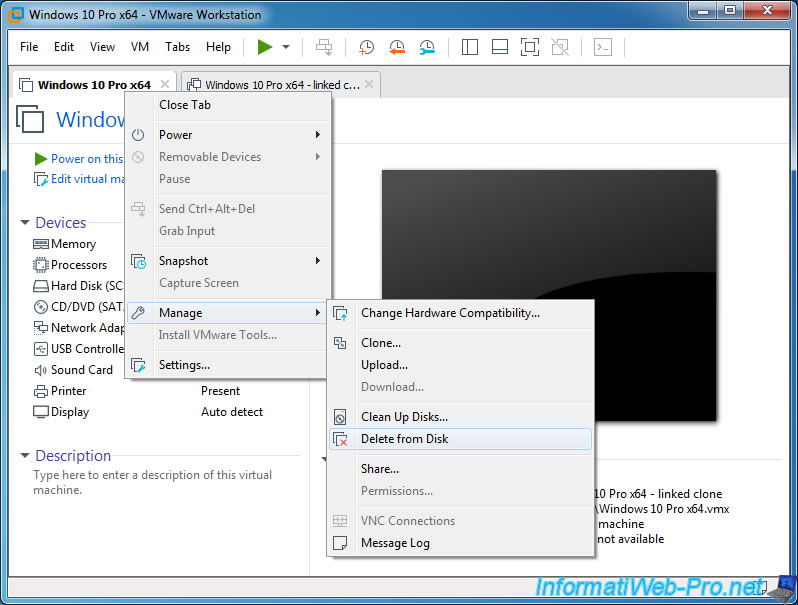
As VMware Workstation knows that there is at least one clone linked to it, it asks you to confirm the deletion of this source virtual machine.
We click on Yes.
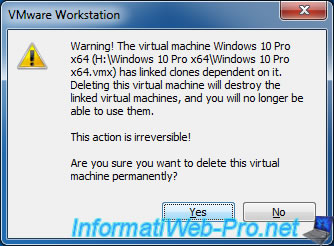
As you can see, the linked clone still appears in VMware Workstation, but it is always indicated that it depends on the source virtual machine we just deleted.
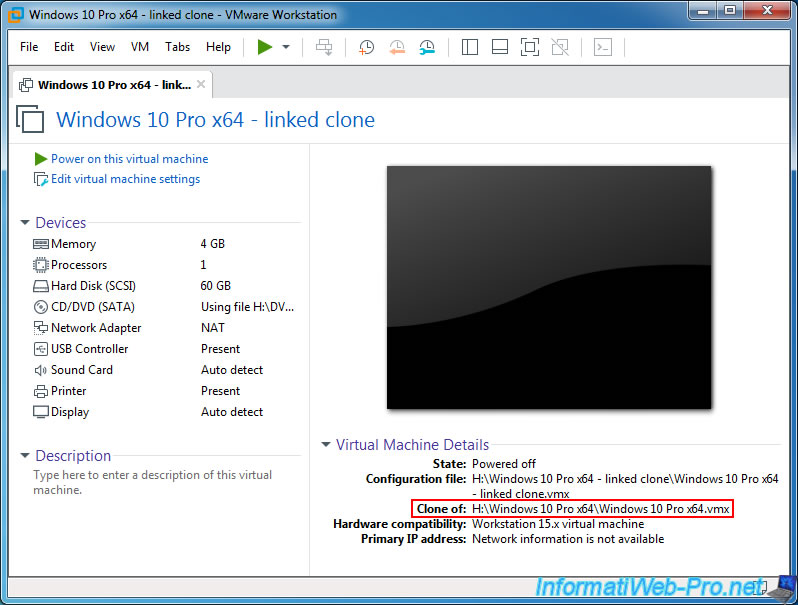
If you try to start this linked clone (by clicking on "Power on this virtual machine"), it will not be able to start and a message will be displayed :
Plain Text
File not found: [path of the source VM's vmx file] This file is required to power on this virtual machine. If this file was moved, specify the new location.
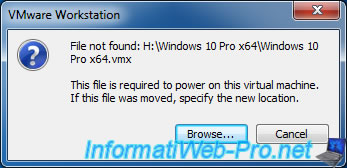
If you open the settings of this virtual machine and try to get informations about the linked clone's hard disk, you will see that VMware Workstation will not be able to give them to you and an error message will be displayed :
Plain Text
The parent of this virtual disk could not be opened.
As noted, the virtual hard disk of the linked clone depends on the virtual hard disk of the source virtual machine that is no longer accessible.
In short, if you want to use linked clones, make sure to have a second copy of the virtual machine in a safe place (on another hard drive, and NOT on another partition, for example) to avoid this kind of scenario.
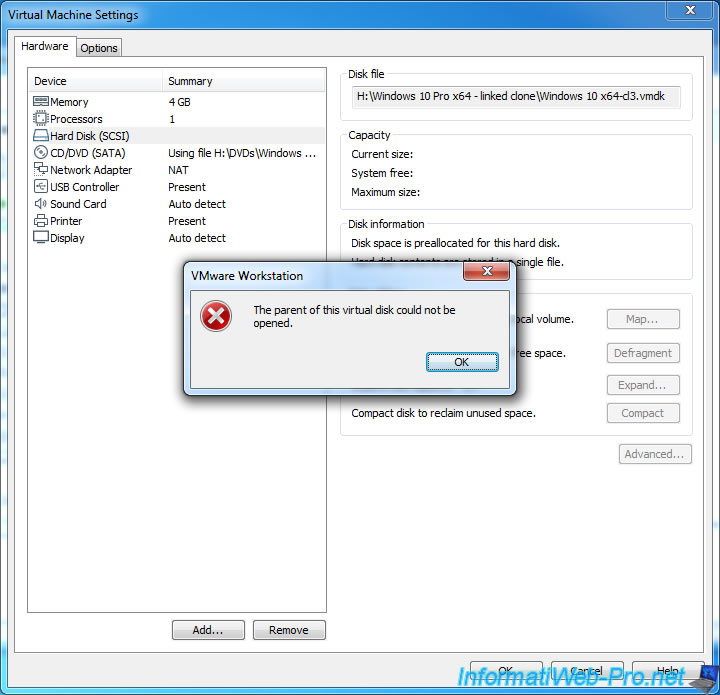
2.3. Template mode
To avoid mistakenly removing a source virtual machine (on which linked clones are based), VMware provides a "Template mode" option.
To use it, go to the settings of the source virtual machine -> Options -> Advanced.
Then, check this box : Enable Template mode (to be used for cloning).
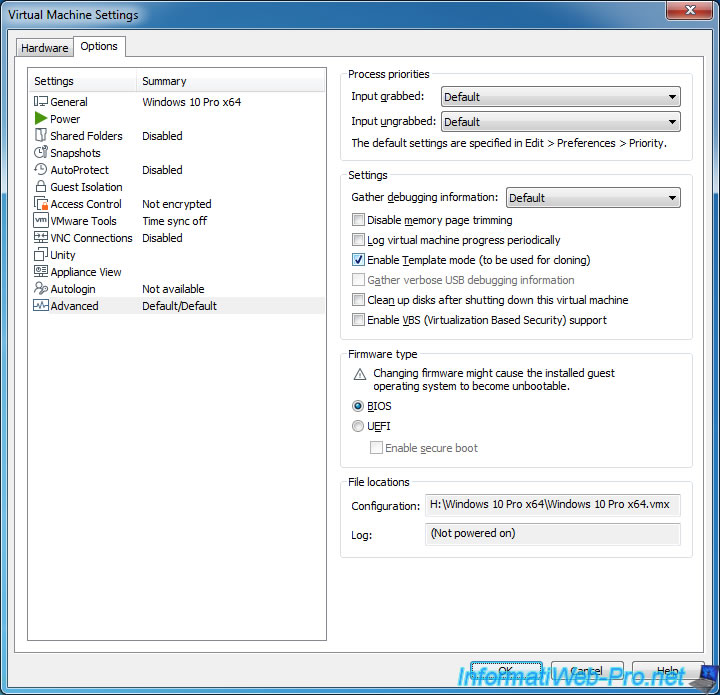
Now, if you try to delete the source VM from VMware Workstation, you will see that the "Delete from Disk" option is now grayed out.
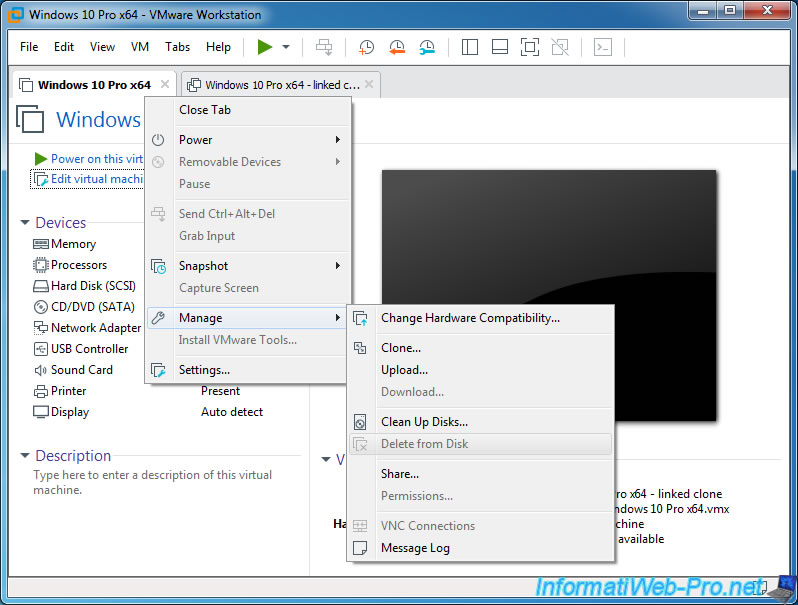
Note that enabling this "Enable Template mode" option will also limit cloning options.
Indeed, when this option is enabled, you will not be able to clone the current state of the source VM, but only one of the pre-saved states using snapshots.
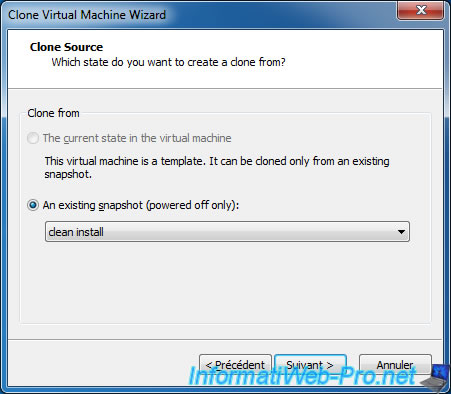
2.4. Limits
2.4.1. Limited virtual hard disk tools
When you use linked clones, you will not be able to use some of the tools for its virtual hard disks.
And especially the Expand option which allowed to increase the size of a virtual hard disk.
If you hover over the Expand button, the "Disks in virtual machines that are linked clones cannot be expanded" message will be displayed.
Also note that the Compact option will not recover the space taken by the files present before the linked clone was created, even if you delete them.
Note : the "Map" option is no longer available since version 17 of VMware Workstation Pro.
Source : VMware Workstation 17.0 Pro Release Notes.
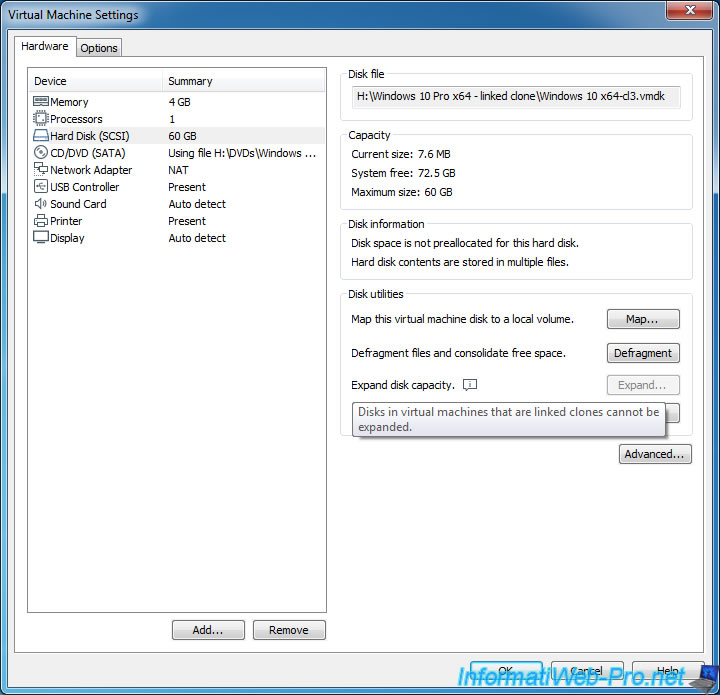
2.4.2. Limits for sharing VMs
Using linked clones can also be a problem if you want to share them with Workstation Server (installed with VMware Workstation).
Warning : virtual machines sharing is no longer available from VMware Workstation 16.
Right click on the linked clone and click : Manage -> Share.
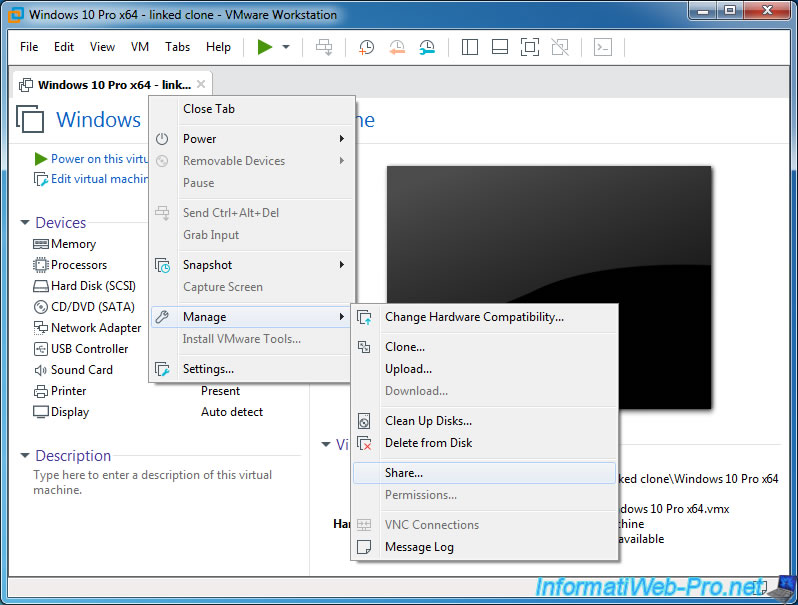
The "Share Virtual Machine Wizard" is displayed.
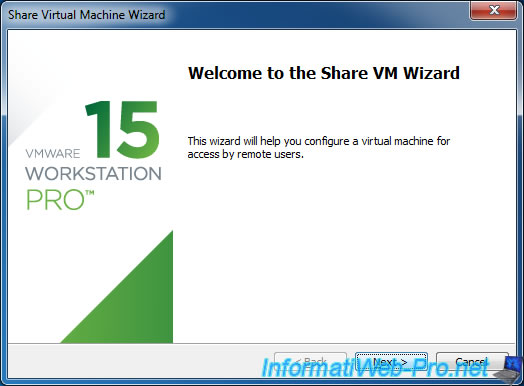
As you can see, the linked clone can't be shared by simply moving it into VMware Workstation's "Shared Virtual Machines" folder.
If you want to share it, you will have to create a complete clone of it to get a virtual machine independent of the others.
This also means that sharing will take time, because VMware Workstation will need to create a copy of the source VM + the linked clone and merge all the copied informations to recreate a complete VM.
Note : the "This virtual machine cannot be moved because it is a linked clone" message will be displayed at the bottom.
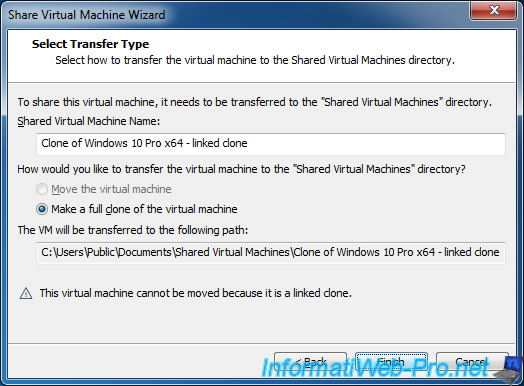
Same for the source VM.
Note : the "This virtual machine cannot be moved because it has linked clones" message will be displayed.
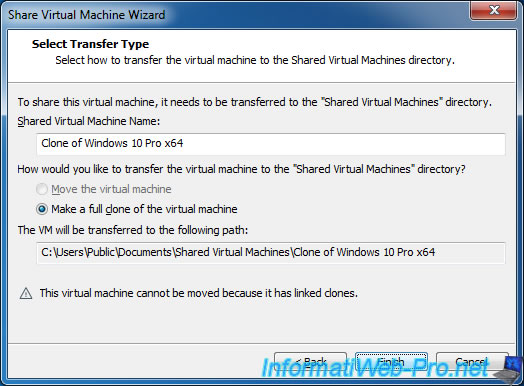
Share this tutorial
To see also
-
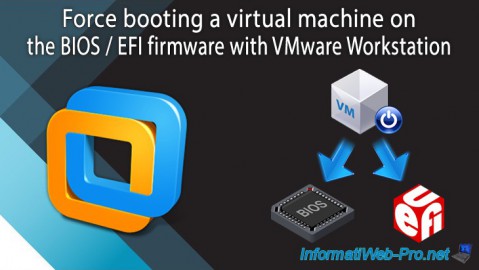
VMware 3/16/2013
VMware Workstation - Boot a VM on the BIOS / EFI firmware
-
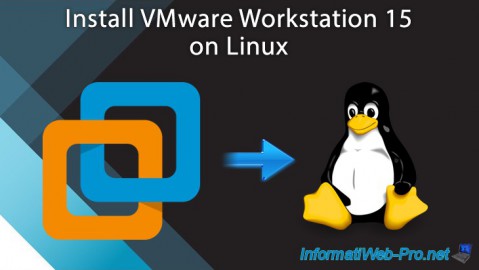
VMware 2/7/2020
VMware Workstation 15 - Installation on Linux
-
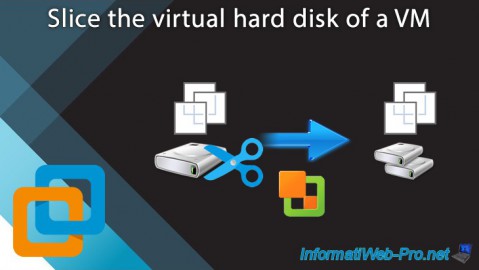
VMware 12/24/2021
VMware Workstation 15 - Slice the virtual hard disk of a VM
-
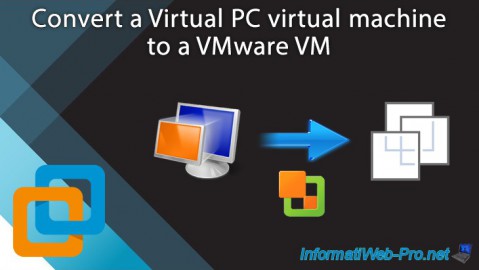
VMware 12/10/2021
VMware Workstation 15.5 - Convert a Virtual PC virtual machine to a VMware VM

No comment